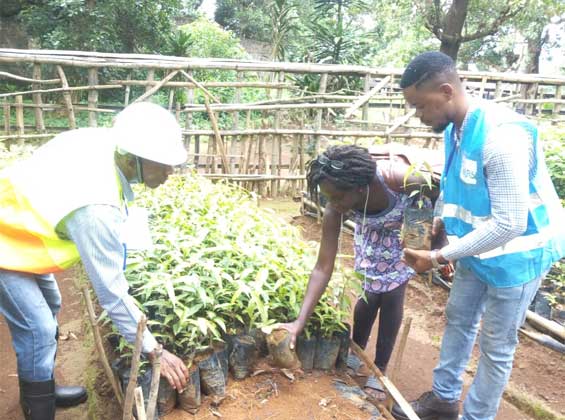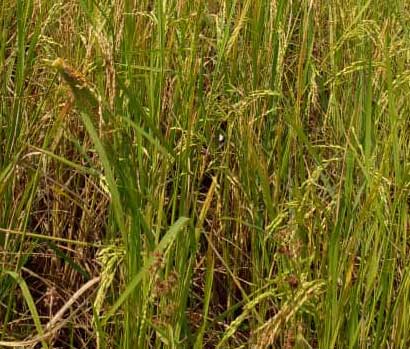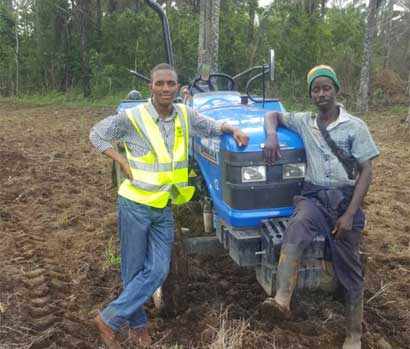- +1 (202) 438-6441
- earthregenerativeprojectsl@gmail.com
-
32 Wallace Johnson St Freetown SL

The Climate and Environmental Education Literacy Campaign
- $0 Raised Of $0
The Climate and Environmental Education Literacy Campaign is a comprehensive initiative of Earth Regenerative Project Sierra Leone aimed at promoting awareness, education, and action on climate change and environmental issues. With the growing urgency to address the challenges posed by climate change, this campaign seeks to empower individuals, communities, and institutions with the knowledge and tools needed to make informed decisions and take meaningful steps towards sustainability.
The campaign emphasizes the importance of climate and environmental literacy. It recognizes that understanding the science behind climate change, as well as the interconnectedness of various environmental systems, is fundamental to fostering environmental stewardship and driving positive change. By promoting literacy, the campaign seeks to bridge the gap between scientific research and public understanding, ensuring that accurate information reaches a wider audience.
Climate change is a global challenge that demands urgent action. Mitigating greenhouse gases is not a choice; it's our responsibility to protect the planet for future generations."
The campaign employs a multi-faceted approach to achieve its objectives. It involves educational initiatives in schools, colleges, and universities, integrating climate and environmental topics into curricula and promoting interdisciplinary learning. EaRP-SL NGO utilizes digital platforms and media channels to disseminate information, raise awareness, and engage with diverse audiences, including the general public, policymakers, and businesses.
The campaign encourages partnerships and collaboration between different stakeholders. It brings together scientists, educators, community leaders, NGOs, and government agencies to share knowledge, best practices, and resources. By fostering collaboration, the campaign aims to create a collective and coordinated effort to address climate change and environmental challenges effectively.
The Climate and Environmental Education Literacy Campaign also emphasizes the need for action. Earth Regenerative Project Sierra Leone (EaRP-SL) NGO empowers individuals and communities to make sustainable choices in their daily lives, such as reducing energy consumption, adopting renewable energy sources, practicing waste reduction and recycling, and supporting local and sustainable businesses. Moreover, it encourages advocacy and engagement in policy-making processes to drive systemic change and promote environmentally friendly practices at a larger scale.
Earth Regenerative Project Sierra Leone (EaRP-SL) NGO Climate and Environmental Education Literacy Campaign is a vital initiative that seeks to promote knowledge, awareness, and action on climate change and environmental issues. By fostering literacy, collaboration, and individual responsibility, the campaign aims to inspire a collective effort towards a sustainable future.
Stop Cutting Down TreesCutting down trees has significant climate effects that can contribute to climate change. Here are some of the main ways in which tree removal impacts the climate:
- Reduced Carbon Sequestration: Trees act as carbon sinks, meaning they absorb carbon dioxide (CO2) from the atmosphere during photosynthesis and store it as carbon in their trunks, branches, and roots. When trees are cut down, the stored carbon is released back into the atmosphere as CO2, increasing the concentration of greenhouse gases. This process contributes to the greenhouse effect and leads to global warming.
- Increased Greenhouse Gas Emissions: The process of cutting down trees often involves burning or decomposition of the felled trees. This releases additional CO2 and other greenhouse gases like methane (CH4) into the atmosphere. In some cases, trees are cut down for land conversion, such as agriculture or urban development, leading to further emissions as the land is disturbed and transformed.
- Loss of Biodiversity and Ecosystems: Trees and forests support a diverse range of plant and animal species. Clearing forests disrupts ecosystems, leading to the loss of habitat for various wildlife, and can push some species towards extinction. The loss of biodiversity can have cascading effects on the environment and ecosystem services, potentially impacting climate regulation.
- Altered Local Climate: Trees play a role in regulating local climates through a process known as evapotranspiration. They release water vapor through their leaves, which cools the surrounding air and forms clouds. When trees are removed, the cooling effect is reduced, leading to altered microclimates, potentially contributing to local temperature increases and changes in precipitation patterns.
- Deforestation and Land Use Change: Large-scale deforestation for agricultural expansion or other purposes can lead to significant changes in land use. When natural forest cover is replaced by agriculture or urban areas, it can lead to altered land surface properties, such as reduced evapotranspiration and increased surface albedo (reflectivity), which can further influence local and regional climate patterns.
- Feedback Loops: Deforestation and forest degradation can disrupt complex feedback loops that regulate the climate. For instance, the Amazon rainforest plays a crucial role in the water cycle, and its destruction could potentially lead to reduced rainfall in the region and beyond, impacting climate on a broader scale.
To mitigate the climate effects of cutting down trees, it's essential to focus on sustainable forestry practices, afforestation (planting new trees), and reforestation efforts to maintain and restore forest cover. Forest conservation and management are critical components of global climate change mitigation strategies.
 Eng
Eng
 简体中文
简体中文
 French
French
 العربيّة
العربيّة




